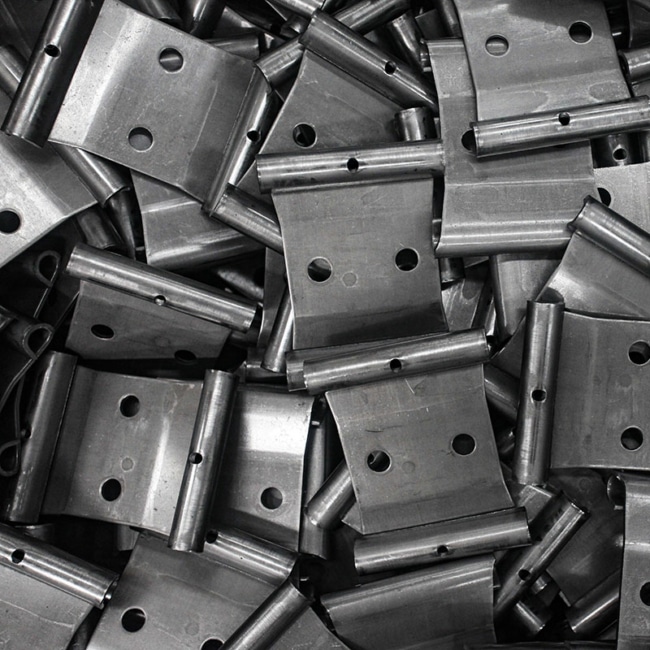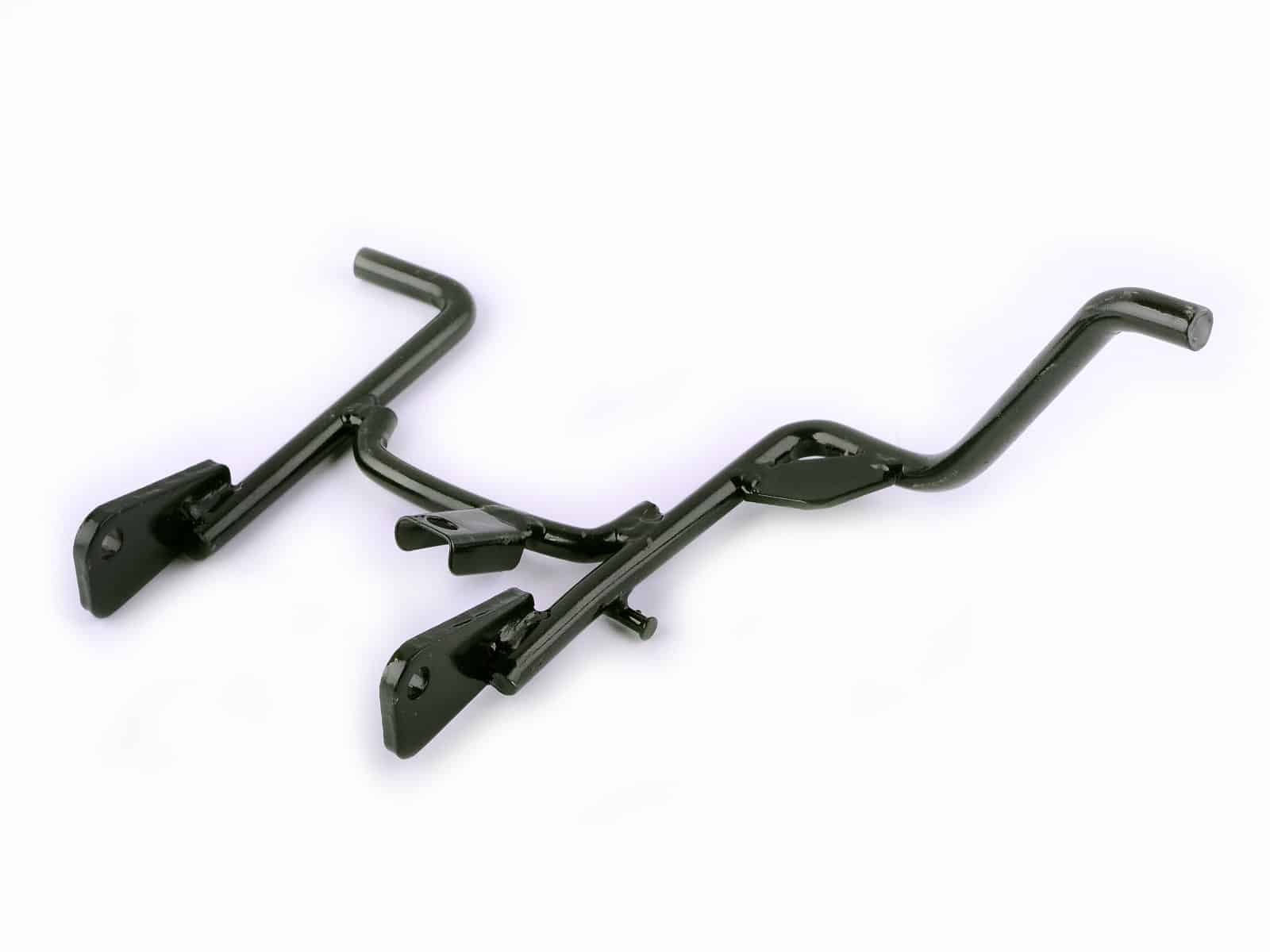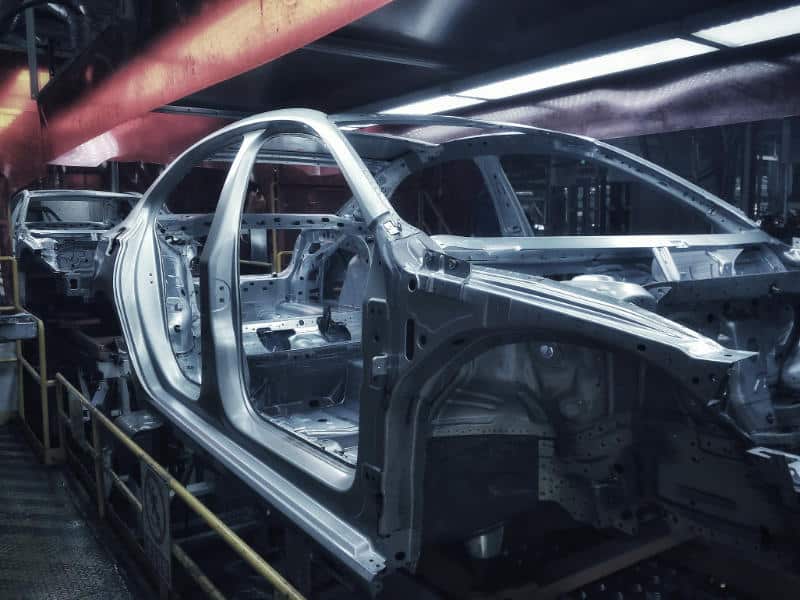Understanding Electrophoretic Coating
Electrophoretic coating is an essential industrial process that bonds paint to metal surfaces using an electric current. Employed in numerous industries, including automotive and aerospace, electrophoretic coating provides intricate parts with an even coating that protects against corrosion.
What is Electrophoretic Coating?
Electrophoretic coating, often known as EP-coating, e-coating or e-painting, is a method that uses electrical current to deposit a paint or coating onto a metal object. This process is widely used due to its efficiency, uniformity and exceptional corrosion resistance.
Electrophoretic coating involves submerging the metal part into a water-based solution containing paint particles. An electrical current is then applied and, due to the principles of electrophoresis, the paint particles migrate towards the metal object and adhere to its surface.
This process guarantees that the entire object, including complex shapes and hidden areas, is uniformly coated. The thickness of the coating can be controlled by adjusting the voltage, enabling precision and consistency across the production line.
Terminology Used to Refer to Electrophoretic Coating
Electrophoretic coating is known under many names, including:
- Electrocoating
- E-coating
- Cathodic electrodeposition
- Electrophoretic deposition coating
- Electropainting
- Electrophoretic lacquering
- Anodic electrodeposition (less common, as cathodic electrodeposition is more prevalent)
Despite the variations in terminology, the fundamental process remains the same. The multiple terms used to describe electrophoretic coating stem from various sources, including technical language, industry preferences, variances in technique and materials used.
Different sectors and regions may adopt specific terms based on historical usage, company branding, or regulatory standards. Despite the diverse terminology, the core principles and benefits of electrophoretic coating remain consistent, offering manufacturers a reliable and efficient method for applying protective coatings to metal surfaces.

The electrophoretic coating process involves several key steps to achieve the desired coating uniformity and durability. This technique is known as electrophoretic deposition, often abbreviated as EPD. The result is a uniformly coated part with a durable finish that can withstand harsh conditions. The entire process is highly controlled and monitored, ensuring the quality and consistency of the final product.
Before the coating process begins, the substrate (the object being coated) undergoes pre-treatment to remove any contaminants such as oils, grease, rust or old coatings. This step typically involves cleaning and degreasing to ensure proper adhesion of the coating.
A bath containing the coating material is prepared. This coating material is typically a dispersion of paint particles or pigments in a liquid carrier, which may include water or organic solvents. The particles are suspended in the solution and carry an electric charge.
The substrate to be coated is suspended in the coating solution bath. The substrate acts as the cathode (negative electrode), while an anode (positive electrode) is also immersed in the bath. Both the substrate and the anode are connected to an external power supply.
When the power supply is turned on, an electric field is established between the anode and the cathode. Because the paint particles in the coating solution are charged, they migrate toward the oppositely charged substrate (the cathode).
As the charged paint particles move toward the substrate, they are deposited onto its surface in a uniform layer. The thickness of the coating can be controlled by adjusting factors such as voltage, time, and the concentration of particles in the coating solution.
Once the desired coating thickness is achieved, the coated substrate is typically rinsed to remove any excess coating solution. Depending on the specific coating material used, the coated substrate may then undergo a curing process, such as baking in an oven, to cross-link the coating and cure it into a durable finish.
After curing, the coated substrate may undergo additional post-treatment steps, such as surface polishing or application of additional protective layers, to enhance its performance and appearance.

Can Be Applied to Complex Shapes
In industries where intricate parts are commonplace, such as automotive or consumer electronics, this feature is invaluable. The coating process prompts particles to adhere uniformly, even on complex geometries such as brackets and tube assemblies. This enables complete protection and enhances durability. Traditional coating methods, such as spray painting, often struggle to reach crevices or cover sharp edges, leaving them vulnerable to corrosion or wear.
Uniform Film Thickness
Electrophoretic coating guarantees a uniform coating across the entirety of the workpiece regardless of its shape or size, providing consistent protection. Such consistency also helps in reducing waste, as every part of the surface receives the necessary amount of coating.
This also helps in industries that demand tight tolerances, as the coating’s depth can be accurately accounted for. Additionally, a uniform thickness enhances the aesthetic appeal of the end product, providing a smooth and polished finish.
Long-Lasting Finish
Besides guaranteeing a consistent film thickness, electrophoretic coating also provides a lasting finish, an attribute that significantly enhances the durability and longevity of the coated products.
This long-lasting finish is a result of the coating's distinctive chemical composition that enables it to withstand wear and tear, corrosion and environmental impacts. This makes the coated items more resilient and extends their lifespan.
Additionally, the coating's inherent durability ensures that the product maintains its aesthetic appeal, without the need for regular touch-ups or refinishing. This is especially advantageous in industries such as automotive and aerospace, where the longevity and appearance of parts are vital.
Wide Variety of Finishes and Effects
Electrophoretic coating offers a wide variety of finishes and effects, catering to diverse industrial requirements and aesthetic preferences. This process allows for finishes ranging from high gloss to matte, and effects such as metallic and pearlescent.
It also provides a range of colour options to match any desired look. This flexibility makes it highly applicable across various uses, including external parts that need a particular appearance. Moreover, electrophoretic coating guarantees uniformity, regardless of the choice of finish.
Less Hazardous Application
Another advantage of e-coating is its environmental friendliness, as the water-based solution contains fewer volatile organic compounds (VOCs) compared to conventional painting methods. Fewer VOC emissions contribute to improved indoor air quality during application, reducing the risk of health issues associated with VOC exposure for workers and nearby communities.
Electrophoretic coating can be used as a primer or a finished top-coat and finds extensive usage across various industrial sectors due to its unique properties.
Automotive Industry
Electrophoretic coating is used in various parts in the automotive industry, protecting them from environmental impacts like salt, moisture and temperature fluctuations. It is also resistant to compounds unique to the automotive sector, including petrol, diesel, brake fluid and clutch fluid.
This versatility means you can find EP coated parts from engine bays and suspension parts to interior pieces. Electrophoretic coating also helps in reducing noise and vibration, contributing to the overall quality and performance of the cars.
The automotive industry, with its stringent quality requirements and expectations for long-lasting components, has found electrophoretic coating to be an invaluable tool, effectively helping manufacturers maintain the high standards that consumers demand while also ensuring the vehicles' longevity.
Appliance Manufacturing
Electrophoretic coating also has extensive applications in the realm of appliance manufacturing, offering considerable benefits regarding durability and longevity. This coating technique is prominently used to enhance the lifespan of various home and commercial appliances.
Key appliances such as refrigerators, washing machines, dryers and dishwashers benefit from this coating, as it increases their resistance to damage and wear.
Additionally, electrophoretic coating provides a sleek, uniform appearance that is aesthetically pleasing.
Furniture Manufacturing
In the furniture manufacturing industry, electrophoretic coating can improve durability, impart a polished look and provide a high level of protection against wear and tear. The result is metal furniture pieces that not only have a quality finish but are also resistant to scratches, impacts and corrosion, thereby extending their lifespan. EP coating is particularly popular for tubular furniture or in commercial environments.
Marine Industry
Electrophoretic coatings have the ability to provide a uniform, thin layer that can reach even the smallest crevices on marine equipment. This makes it an ideal solution for coating intricate parts that may otherwise be difficult to protect.
The protective layer formed by EP coating acts as a barrier against corrosion from seawater, which can have a devastating and costly impact on marine equipment. Furthermore, the durability and longevity of EP coating makes it a cost-effective solution for marine applications, reducing the need for frequent recoating and maintenance.


Electrophoretic coating is a cost-effective solution for a wide array of projects across various industries. Its multitude of benefits, such as the ability to uniformly coat complex shapes, the provision of a durable finish and the flexibility it offers in terms of a wide variety of finishes and effects, make it a favoured choice for many manufacturers.
Get in touch today...
either contact us on the details below or fill out the form and we'll get back to you!